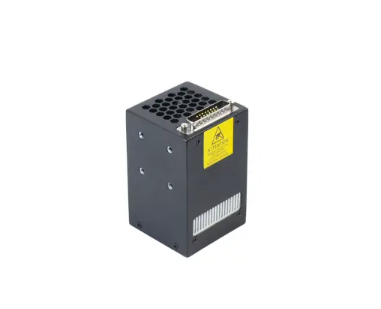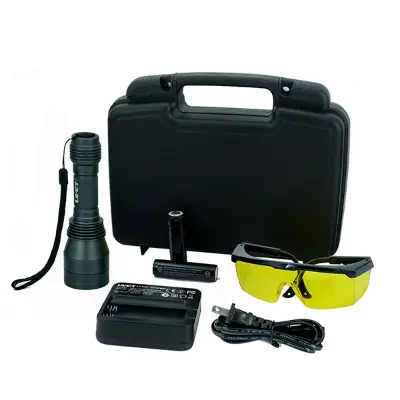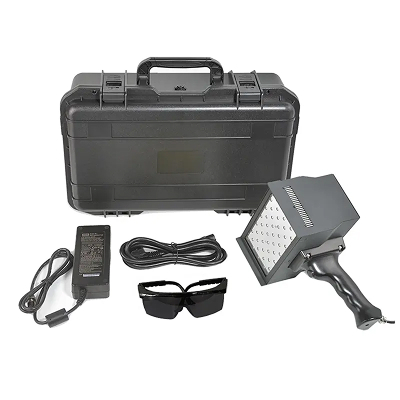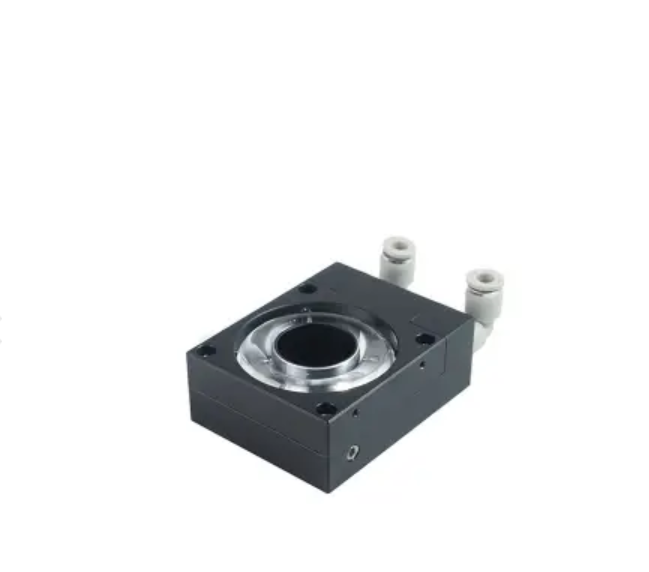What is the UV Curing of Adhesives?
The process of the UV curing for adhesives technology consists of four basic steps:
Adhesive Application:
The light-sensitive glue or UV adhesive is placed on the surface of bonding, which can be either glass, plastic, metal, or composites.
Alignment:
Elements are put in place in a very precise manner so as to achieve even contact between the layers of the adhesive.
UV Light Exposure:
The UV LED curing system or UV curing lamp system is a source of specific wavelengths (typically 365nm or 395nm) to activate photoinitiators.
Curing and Solidification:
The photo polymerized adhesive takes a few seconds to cure, and it can cure completely with outstanding bond integrity.
The whole process will remove the use of heat curing or extended drying periods and provide the fast-curing adhesive technology, which enhances production efficiency and reduces the use of energy.
UV-Curable Adhesives are of various types
UV-Cured Epoxy Resins
Adhesives made of epoxy are best suited for structural bonding where high bond strength is needed when working with UV light. One of the common applications is in the making of electronics and in car manufacturing.
Acrylic Acids, UV Curable Adhesives
Acrylics are also noted to possess a high speed of bonding agent and low temperature curing of UV, which is used in optical lens bonding and the manufacturing of plastic components.
Methods of applying UV-curable Pressure-Sensitive Adhesives (PSA)
These adhesives can be applied in packages and labelling purposes, and provide immediate solutions in UV bonding that cannot be peeled and do not age.
Polyurethane and UV-Curable silicone Adhesives
Their use is flexible, accurate in UV bonding, and biocompatible; this makes them essential in aerospace bonding processes and medical devices.
The benefits of UV-Curable Adhesives
Fast and Efficient Curing
The process of curing the UV adhesives takes a few seconds to complete the polymerization, and in comparison, to the conventional production processes, which use heat or solvents, the process takes a lot of time.

Solvency-Free and Environmentally Friendly
The majority of the UV curing adhesive systems are solvent-free, and they generate very minimal VOC emissions; therefore, they are eco-friendly UV adhesives that can be used in manufacturing sustainably.
Precision and High Performance
The UV adhesive curing lamp provides uniform curing wavelength and accurate UV bonding with high bonding strength and excellent optical clarity.
Energy-Saving and Low-heat
The curing process of LED UV lamps requires less power as compared to the mercury lamps, which continue to keep the systems of energy efficient curing that enhances longevity of the equipment and costs of operations.
Improved Compatibility of Materials
UV bonding adhesives can bond a variety of substrates, such as glass, metals, ceramics, and plastics, and retain the strength of adhesives in UV light.
Technical Insight: Specifications of UV Curing System
A UV LED adhesive system of today includes:
Wavelength Range: 365nm-405nm (optimized to multiple adhesive chemistries)
Irradiance: 1-30 W/cm2 (adhesive viscosity and substrate type).
UV Intensity Control: Variable power dependences of UV curing efficiency.
Cooling System: Liquid or air-cooled systems (temperature stable).
Time To Cure: 1-20 seconds full cure.
Type of Lamp. LED, mercury, or hybrid.
In UV NDT, our high-technology UV curing machines are designed with precision, reliability, and sustainability, thus producing the highest quality performance in all bonding processes.
UV Curing in the Contemporary Industry
Electronics Manufacturing
In electronics, UV curing in PCB adhesive bonding gives thermal stability, chemical resistance, and fast curing to components such as microchips, sensors, and fiber optics.

Automotive Industry
UV bonding in car manufacturing improves the durability of headlamps, car infotainment screens, and lightweight structural bonding.
Medical Devices
Adhesives used in medical devices have been cured using UV, which has ensured sterile, biocompatible, and robust joints needed in catheters, syringes, and diagnostic equipment.
Optical Bonding
Optical bonding is cured using UV to provide an absence of bubbles that provides transparency, suitable for touch screens, lenses, and display panels.
Aerospace and Defense
Structural bonding is possible with UV-curable composite materials, which provide crosslinking density and polymerization kinetics that are adapted to extreme conditions.
Photopolymerization Chemistry and Mechanism
The UV curing chemistry includes acrylate monomers, oligomers, and photoinitiators, which react to the UV light. The reaction could happen through two means:
Free Radical Curing:
Applicable to acrylate systems, and having quick curing and good bonding.
Cationic Curing:
Usually available in epoxy resins, stronger chemical and thermal resistance.
The performance and the durability of the bonding cured are the result of the balance between the density of crosslinking and adhesion promoters under UV.
Control of UV Curing Intensity and Wavelength
It is important to select an appropriate UV curing intensity and wavelength to optimize the performance of adhesives:
Epoxy adhesives: Deep curing of epoxy adhesives.
385nm: Universal acrylics curing.
395nm-405nm: LED systems for fast surface curing.
UV light measurement of the curing tool can be used to guarantee consistency and repeatability throughout production batches, and thus, quality assurance is simpler and more accurate.
Energy Saving and Eco-Friendliness
With the conversion of industries to greener processes, LED UV curing systems have been the choice, because they consume less energy, have a long lifetime time and without mercury-free. LED vs mercury UV curing systems are shown to have up to 60% energy savings, compared to traditional systems, which justify worldwide sustainability.
Market Analysis and Future Projections
As per the most recent market insight, the UV curing adhesive market trends 2025 report shows that the market is expected to expand substantially in the case of automotive, electronic, and packaging markets. Next-generation adhesive curing and customer-specific UV curing solutions are in high demand due to the automation and environmentally friendly production demands. Companies such as UV NDT are leading such change and are providing the industrial UV adhesive manufacturers with new UV curing systems and solutions.
Conclusion
The UV curing for adhesives is one of the milestones in the industry of bonding. UV curing has become a fast substitute to thermal and solvent-based systems due to its unprecedented speed, precision, and sustainability. The future of bonding is in ultraviolet light curing, whether in electronics manufacturing, medical equipment, or the production of vehicles. Premium-quality UV curing systems, adhesive curing lamps, and tailor-crafted solutions in bonding. To find out about excellent UV curing, visit UVET, our preferred choice in the area of industrial UV curing.





